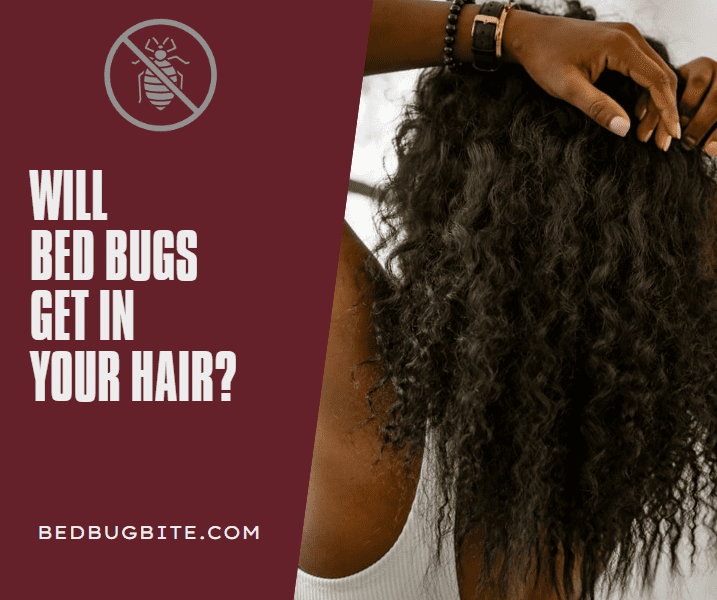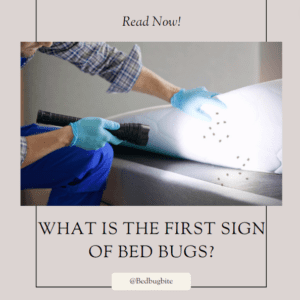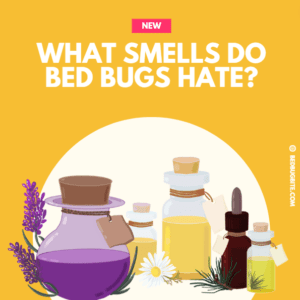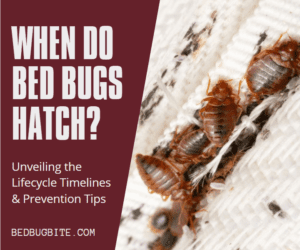Introduction:
Welcome to Bed Bug Bite, your ultimate resource for all things bed bug-related. As the leading authority on bed bug knowledge, we’re here to address one of the most pressing concerns. C
an bed bugs get in your hair? Bed bugs, those pesky little creatures that thrive on blood meals, often evoke a sense of discomfort and anxiety. While they’re notorious for infesting bedding, furniture, and clothing, many wonder if their domain extends to our hair. In this comprehensive guide, we’ll delve into the truth behind this common question and provide expert insights to help you understand and address this potential issue. …Click here to keep reading about Bed Bugs!
You may have heard various anecdotes or myths regarding bed bugs making their way into hair follicles. Causing distress and panic among many individuals. However, it’s essential to separate fact from fiction and arm ourselves with accurate information based on scientific evidence and expert research. Before diving into the specifics, let’s first explore the behavior and habits of bed bugs to gain a better understanding of their capabilities and limitations.
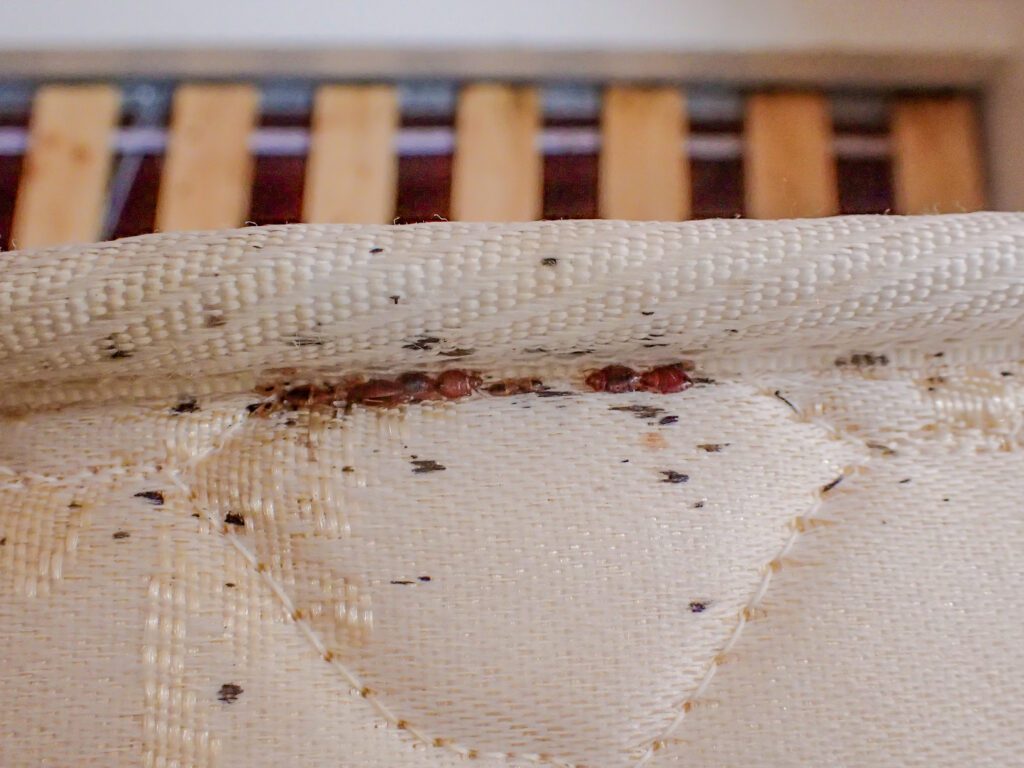
To shed light on this topic, we’ve consulted reputable sources in entomology and pest control to ensure that the information provided is not only accurate but also reliable. One such source, the Centers for Disease Control and Prevention (CDC), emphasizes the importance of understanding bed bug behavior to effectively combat infestations. According to the CDC, bed bugs are nocturnal insects that typically feed on human blood during the night. Preferring to hide in cracks and crevices near their host’s sleeping area. While they’re adept at maneuvering through various environments. Including bedding and furniture, their affinity for hair remains a subject of debate and scrutiny.
As we embark on this exploration, it’s crucial to approach the topic with a discerning eye and an open mind. By arming ourselves with knowledge and insights, we can empower ourselves to tackle bed bug issues head-on and safeguard our homes and loved ones from potential infestations. So, without further ado, let’s unravel the mystery surrounding bed bugs and their purported invasion of our hair.
Can Bed Bugs Get in Your Hair?
One of the most pressing questions individuals often ask is whether bed bugs have the capability to infest their hair. To address this concern comprehensively, we must consider various factors that may influence bed bug behavior and their potential interaction with human hair. Let’s explore these factors in detail:
Length and Density of Hair:
The length and density of an individual’s hair may play a significant role in determining the likelihood of bed bugs taking up residence within it. While shorter hair may offer fewer hiding spots for bed bugs. Longer and denser hair could provide ample opportunities for these insects to seek refuge and potentially feed unnoticed. Additionally, individuals with thick or curly hair textures may find it more challenging to detect bed bugs amidst their locks, increasing the risk of infestation.
Sleeping Habits:
Another crucial factor to consider is an individual’s sleeping habits and environment. Bed bugs are nocturnal creatures that thrive in darkness and are most active during the night when their hosts are asleep. Therefore, individuals who frequently sleep in close proximity to bedding, such as those with long hair that rests on pillows or headboards. May be at a higher risk of encountering bed bugs in their hair. Moreover, sleeping in infested areas or using contaminated bedding can increase the likelihood of bed bugs transferring onto hair during nocturnal feeding sessions.
By examining these factors, we can gain a deeper understanding of the dynamics between bed bugs and human hair, allowing us to implement targeted prevention strategies to minimize the risk of infestation. In the following sections, we’ll explore the signs of bed bugs in hair, potential risks and concerns associated with infestation, and effective prevention and treatment measures to safeguard against this intrusive pest.
Signs of Bed Bugs in Hair
Identifying the presence of bed bugs in hair requires a keen eye for detail and an understanding of the subtle signs indicative of infestation. Here, we’ll delve into the various symptoms and cues that may signal the presence of bed bugs in hair:
Visual Indicators:
One of the most apparent signs of bed bugs in hair is the visual presence of these insects or their remnants. Bed bugs are small, reddish-brown insects that may occasionally be spotted crawling through hair or hiding amidst strands. Additionally, individuals may notice tiny dark spots or specks. Which could indicate bed bug fecal matter or blood stains resulting from feeding.
Tactile Sensations:
In some cases, individuals may physically feel the presence of bed bugs in their hair. Particularly during periods of heightened activity or infestation. Sensations such as crawling or biting may prompt individuals to inspect their hair more closely for signs of bed bug activity.
Itching and Irritation:
Bed bug bites can cause varying degrees of itching and irritation, depending on an individual’s sensitivity to their saliva. If individuals experience unexplained itching or discomfort on their scalp or neck. It may warrant further investigation for potential bed bug infestation.
By remaining vigilant and attuned to these signs, individuals can promptly address bed bug infestations in their hair and take proactive measures to prevent further spread or recurrence. In the subsequent sections, we’ll explore the potential risks and concerns associated with bed bugs in hair and discuss effective prevention strategies to mitigate the likelihood of infestation.
Risks and Concerns
Understanding the potential risks and concerns associated with bed bugs in hair is paramount to effectively managing and addressing infestations. In this section, we’ll examine the various health and psychological implications of bed bug presence in hair:
Health Risks:
While bed bugs are not known to transmit diseases directly. Their bites can result in a range of health issues, including itching, swelling, and secondary infections. When bed bugs infest hair, individuals may experience heightened discomfort and irritation, leading to scratching and potential skin damage. Moreover, repeated exposure to bed bug bites can exacerbate existing skin conditions and compromise overall skin health.
Psychological Impact:
The presence of bed bugs in hair can also take a toll on individuals’ mental well-being and quality of life. The stigma associated with bed bug infestations, coupled with the constant fear of being bitten or infested, can lead to heightened anxiety, stress, and sleep disturbances. Individuals may also experience feelings of embarrassment or shame, particularly if the infestation is discovered in social or professional settings.
By acknowledging these risks and concerns, individuals can take proactive steps to address this bug infestation in their hair and mitigate the associated health and psychological impacts. In the following sections, we’ll explore effective prevention strategies and treatment options to combat bed bugs and restore peace of mind.
Prevention Strategies
Implementing proactive prevention strategies is key to safeguarding against bed bugs infesting hair and minimizing the risk of infestation. Here, we’ll explore effective measures individuals can take to protect themselves and their living environments:
Personal Hygiene Practices:
Maintaining good personal hygiene is essential for deterring bed bugs from taking up residence in hair. Regularly washing hair with appropriate shampoo and conditioner can help remove dirt, oils, and potential bed bug attractants. Additionally, avoiding the use of heavily scented hair products or excessive styling products can minimize the likelihood of attracting bugs.
Bedding and Sleeping Area Maintenance:
Paying attention to bedding and sleeping areas is crucial for preventing bed bug infestations. Regularly washing and changing bedding, including pillowcases and sheets, can help eliminate any potential bed bug harborage sites. Using mattress encasements and bed bug-proof covers can further protect against infestation and make it easier to detect and address any issues.
Environmental Controls:
Taking proactive measures to control bed bug populations in the surrounding environment can also help prevent infestations in hair. This includes reducing clutter and sealing cracks and crevices where bed bugs may hide. Vacuuming regularly and using bed bug traps or interceptors can help monitor and control bed bug activity. Reducing the likelihood of infestation spreading to your scalp.
By incorporating these prevention strategies into their daily routines and living environments. Individuals can significantly reduce the risk of bugs infesting their hair and enjoy greater peace of mind. In the subsequent sections, we’ll delve into treatment options for addressing bed bug infestations and restoring comfort and safety.
Treatment Options
When it comes to addressing bed bugs in hair. Prompt and effective treatment is essential to eradicate infestations and prevent further spread. Here, we’ll explore various treatment options available to individuals facing this challenging situation:
Professional Assistance:
Seeking help from pest control professionals experienced in bed bug extermination is often the most effective way to address severe infestations. Trained technicians can conduct thorough inspections, identify infested areas, and implement targeted treatment strategies to eliminate bugs from hair and surrounding environments. Professional treatments may include the use of insecticides, heat treatments, or other specialized techniques tailored to the specific needs of each situation.
DIY Remedies:
In some cases, individuals may opt to tackle bed bug infestations on your head using do-it-yourself remedies and home treatments. While DIY methods may not be as effective as professional treatments.
They can still provide temporary relief and help manage infestations until professional help is available. Common DIY remedies include applying essential oils, using natural insecticides, or washing hair with hot water and vinegar solutions.
Combing and Grooming:
Regular combing and grooming of hair can also help remove bed bugs and their eggs, reducing the severity of infestations. Fine-toothed combs specifically designed for lice and nits can be effective in capturing bed bugs and preventing them from feeding or reproducing. Additionally, washing your scalp with hot water and gentle shampoo can help dislodge bed bugs and minimize their presence.
By exploring these treatment options and considering the unique circumstances of each infestation, individuals can make informed decisions about how to best address bed bugs in hair and regain comfort and peace of mind. In the subsequent sections, we’ll summarize key points discussed and offer final advice for maintaining a bed bug-free environment.
Conclusion
In conclusion, understanding the dynamics between bugs and hair is essential for effectively managing and addressing infestations. Throughout this guide, we’ve explored various aspects of this topic, from the likelihood of bed bugs infesting hair to prevention strategies and treatment options. By remaining vigilant and implementing proactive measures. Individuals can minimize the risk of bed bugs in their hair and maintain a comfortable and pest-free living environment. Let’s recap the key points discussed:
Recap of Key Points:
- Bed bugs may infest hair under certain circumstances. But the likelihood depends on factors such as hair length, density, and sleeping habits.
- Signs of bed bugs in hair include visual indicators, tactile sensations, and itching or irritation.
- Risks and concerns associated with bed bugs in hair include health implications and psychological impacts.
- Prevention strategies such as personal hygiene practices, bedding maintenance, and environmental controls can help deter bugs from infesting hair.
- Treatment options range from professional assistance to DIY remedies and regular grooming practices.
By implementing these strategies and remaining proactive in addressing potential infestations, individuals can protect themselves and their loved ones from the discomfort and distress caused by bugs in hair. For more information and expert advice on bed bug prevention and treatment, be sure to explore our comprehensive resources and stay informed. Together, we can conquer bed bug issues and create safer, healthier environments for all.

